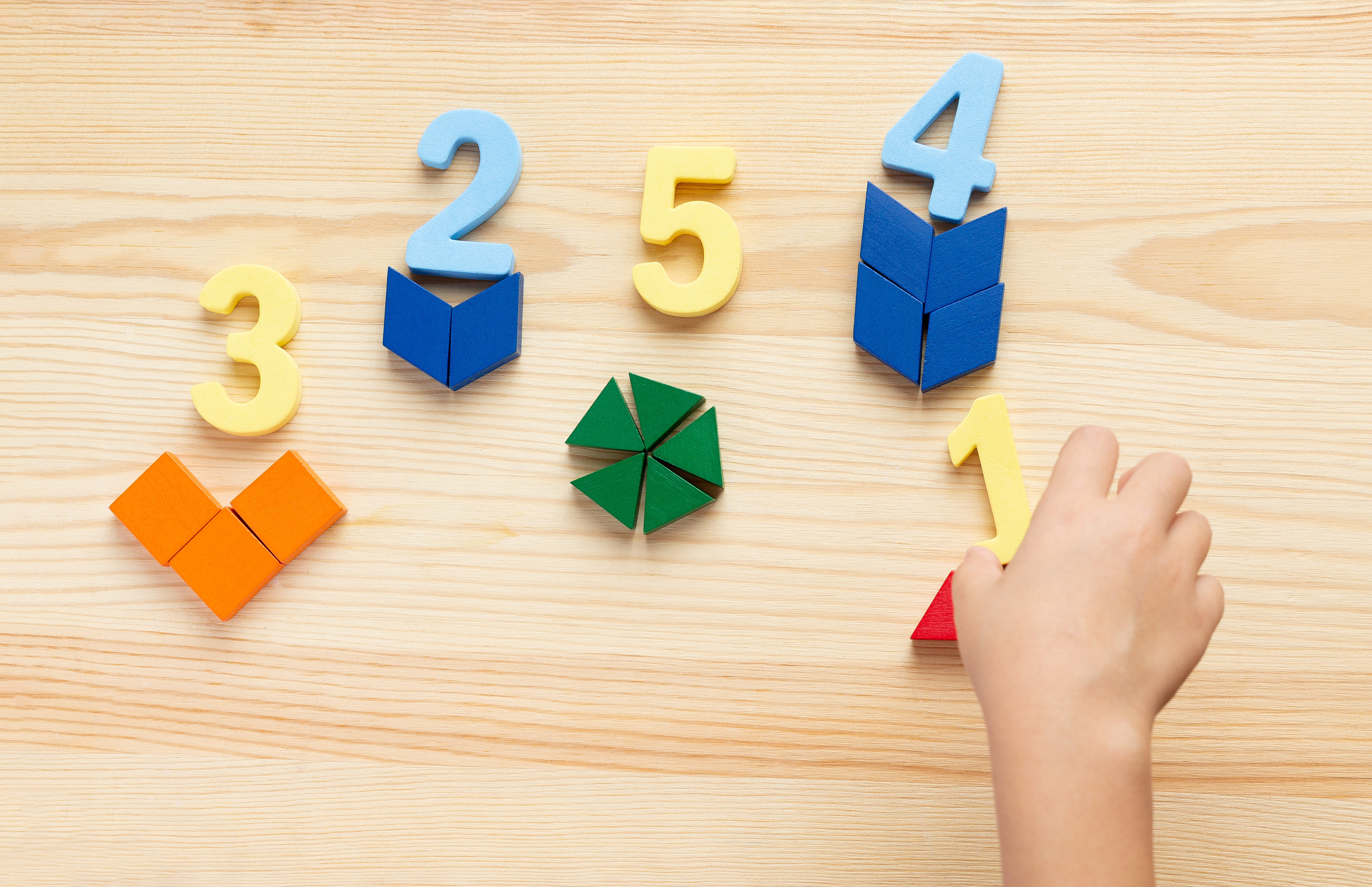Loading...
Math
Understanding Numbers Through Touch
Math in Montessori starts with the hands. Instead of memorizing, children use concrete materials—beads, rods, counters—to explore number sense, patterns, and quantity. This tactile experience turns math into something real, memorable, and even joyful.

Why It Matters
Numeration: Matching objects to numerals builds
understanding of quantity and value.
Counting: Using rods, beads, or fingers to
count in sequence helps children internalize order.
Symbol & Quantity: Visualizing the meaning of a
number deepens comprehension and readiness for addition.
Place Value: Golden beads and number cards
introduce the decimal system in a hands-on way.
Everyday Math: Children discover math in
cooking, calendar time, and practical life work.
The Math Journey
- Number Recognition: Learning numerals 1–10 and connecting them to objects.
- Counting Practice: Using number rods, spindles, or beads to practice sequence and quantity.
- Quantity vs. Symbol: Matching real groups to written numbers.
- Decimal System: Introducing units, tens, hundreds with tangible materials.
- Odd & Even: Using counters to discover number relationships.
- Practical Applications: Measuring, pouring, sorting, and comparing in daily routines.
“I never imagined math could be fun at this age. My son runs to the number rods every morning—he builds towers and counts everything now.”